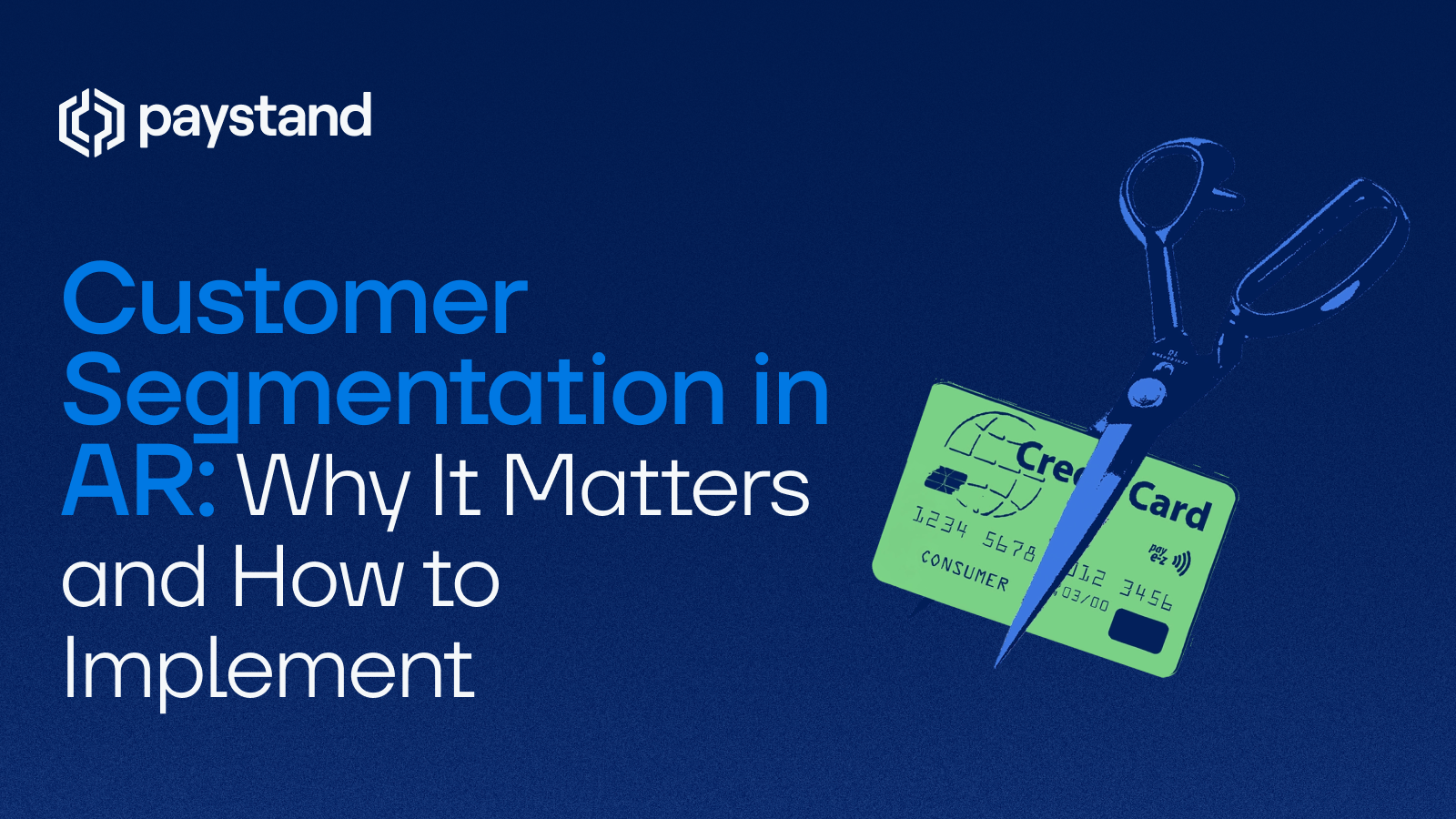Customer Segmentation in AR: Why It Matters and How to Implement

Table of Contents
- What Are the Best Software Tools for Customer Segmentation in Accounts Receivable to Improve Cash Flow?
- How Can My Business Implement Automated Solutions for Customer Segmentation in Accounts Receivable?
- What Are the Benefits of Using Customer Segmentation for AR Strategies in Growing Companies?
- How to Implement Customer Segmentation in AR
- How to Improve Collection Strategy with Segmentation
- Collections Portfolio Segmentation
Key Takeaways
- Customer segmentation in accounts receivable helps identify high-risk accounts, reduce bad debt, and improve cash flow.
- Automated solutions streamline segmentation by grouping customers based on payment history and customer behavior.
- Effective segmentation leads to improved efficiency, better customer relationships, and stronger financial outcomes.
-
Tailored collection strategies—ranging from automated emails to escalated phone calls—maximize recovery while preserving goodwill.
Customer segmentation in accounts receivable (AR) isn’t just a marketing technique; it’s a financial strategy. By dividing customers into groups based on payment history, customer behavior, and risk levels, finance teams gain sharper visibility into their collections process.
Segmentation helps identify high-risk customers early, reducing bad debt and improving efficiency in AR management. Instead of treating every overdue invoice the same way, businesses can tailor outreach, whether through phone calls, automated reminders, or escalation to collections, based on each segment’s behavior.
What Are the Best Software Tools for Customer Segmentation in Accounts Receivable to Improve Cash Flow?
Modern AR tools leverage AI-driven analytics and automation to classify accounts by payment patterns, risk level, and engagement history. Effective customer segmentation platforms integrate with ERPs, helping finance teams monitor high risk accounts in real time.
Recommended tools and features include:
- AR automation platforms with built-in segmentation rules.
- Predictive analytics to forecast late payments.
- ERP-integrated dashboards that track collection process efficiency.
- Machine learning models that adapt segmentation as customer behavior evolves.
Having these tools will support faster collections, reduce manual phone calls, and boost cash flow.
How Can My Business Implement Automated Solutions for Customer Segmentation in Accounts Receivable?
Automated AR systems allow businesses to:
- Create customer segments based on payment history and outstanding balances.
- Trigger workflows tailored to each group (think gentle reminders for low-risk accounts vs. strict collection strategies for high-risk customers).
- Generate reporting that tracks customer satisfaction while reducing manual processes.
For example, automation can flag late payments instantly and assign them to a risk bucket, reducing your average collections cycle period. This reduces dependency on manual outreach and improves efficiency.
What Are the Benefits of Using Customer Segmentation for AR Strategies in Growing Companies?
For growing businesses, customer segmentation provides three key advantages that can improve accounts receivable collections:
- Improved Efficiency – Finance teams save time by focusing efforts on high-risk accounts instead of blanket strategies.
- Better Customer Relationships – Tailored communication improves the customer experience, avoiding one-size-fits-all collection strategies.
- Stronger Cash Flow – Prioritizing collections from risky segments while maintaining goodwill with reliable customers leads to more predictable working capital.
How to Implement Customer Segmentation in AR
Practical steps for implementing segmentation in AR:
- Analyze customer behavior – Start with payment timelines and delinquency patterns.
- Group customers into segments – Such as “on-time payers,” “habitual late payers,” and “delinquent accounts.”
- Apply differentiated strategies – Automated reminders for reliable segments, phone calls, or escalations for high-risk accounts.
- Leverage automation – Use AR software to assign accounts to buckets in real time.
How to Improve Collection Strategy with Segmentation
Segmentation enhances collection strategies by aligning tactics with risk levels:
- Low-risk accounts – Automated email reminders, self-service payment portals.
- Medium-risk accounts – Personalized outreach, scheduled phone calls, and adjusted payment processes.
- High-risk customers – Escalation to dedicated AR staff or collections agency to prevent bad debt.
Businesses that implement segmentation often report reduced late payments and faster DSO improvements.
Collections Portfolio Segmentation
A collections portfolio segmented by customer behavior gives AR teams visibility into where resources should be allocated.
Benefits include:
- Identifying high-risk customers before they become uncollectible.
- Matching the collections process to payment behavior.
- Ensuring finance teams balance efficiency with customer satisfaction.
This strategic approach strengthens accounts receivable management and provides CFOs with actionable insights for forecasting.
Ready to simplify your collections and stop the cash flow bottlenecks? Explore Paystand’s Collections Automation.







%20(1)%20(1).jpg?width=100&height=100&name=IMG_3752%20(1)%20(1)%20(1).jpg)